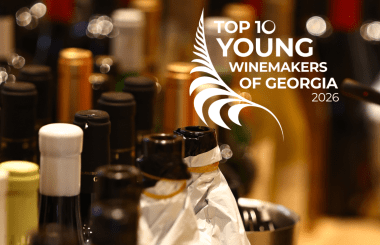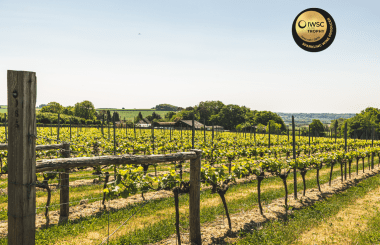IWSC 2024 Turkish Wine Judging: judges' deliberations
At the end of last week, our international wine judges headed to Istanbul for the IWSC's second Global Wine Judging in Turkey in partnership with Tuğrul Şavkay Turkish Wines Competition. The panels were led by the IWSC judge Isa Bal MS and Wine Judging Committee member Sarah Abbott MW. Our panels were tasked with judging wines from a wide range of styles and grape varietites, both indigenous and international.
Our experts spoke highly of the standard of this year's entries: “Across the two days of judging we were impressed with the diversity and quality of the wines we tasted. For those of us who also judged last year, there was also an evident improvement in that quality - which was satisfying - with more gold medals awarded this time round.”
Many wines made from indigenous grapes from across Turkey were awarded a range of medals including several strong golds.
Two wines made from Öküzgözü grapes, Turkey’s most widely planted variety, won gold medals with both wines possessing a “subtle fruit structure with refreshing acidity.” The judges also noted that one of the wines made great use of American oak which created a “rounded balance” on the palate.
Another of well-performing indigenous grape variety was Boğazkere. A silver and a gold medal was awarded to wines made from this Turkish grape. The gold medal-winning wine drew the attention of the judges thanks to its “ethereal tertiary characteristics” that the panel described as “quite evolved, with strong notes of bramble, dark fruits and a cigar box finish.”
The Kalecik Karasi wines put on an impressive performance, with every wine in the flight winning a medal. One of these was awarded a gold with the judges commenting: “This was a really well made, powerful wine, with great tannins that are silky, ripe subtle fruit with great depth of flavour and structure.”
Almost every wine in the Emir/Narince flights was awarded a medal, with the majority winning bronze medals. One high-performing Narince wine was awarded a gold medal. “This wine possess very good fruit intensity with a positive influence of oak and a strong finish,” shared the judges.
The international varieties performed well this year, with the panel awarding 5 gold medals to wines made from international grapes. One of these gold medals went to a Pinot Meunier that the judges highlighted for its “round body, rich tannins and unique aromatics of floral perfume”.
Another gold medal-winning Cabernet Franc stood out to our judges thanks to its “very good tannin structure and depth of flavours with earthy dark fruits and ripe black cassis.” The judges labelled it as “overall a great wine.”
One particularly high-scoring Merlot piqued our judges interest with several unique attributes, such as “an intriguing nose of spice and wild cherries followed by a perfumed, dark, savoury core”. Our experts went on saying that it is “a fascinating and unusual wine with a gastronomic quality, delicacy and textural charm and a wild berry finish. A really good effort in the context of the style and movement.”
Syrah/Shiraz from the Aegean region was another high-performing category, with all but one entry winning a medal. “Syrah/Shiraz perfomed extremely well, with a high number of golds” said the judges. Several of the gold winning wines were particularly impressive to our judges who declared they were “excellent examples of the style”.
One of these wines was awarded 96 points and a gold medal. The judges drew attention to an “inviting gunpowder nose, bramble, black pepper, rich, ripe dark fruit, lovely intensity with a slightly wild character, very much a northern Rhone, cooler climate style of Syrah.”
Another impressed our judges so much that they labelled it as “a real stunner of a Syrah displaying all the well-developed traits one would want, presenting both fruit, subtle spice and leather on the nose.”
The red blends also impressed our judges, with several strong silver medals and 4 gold medals being awarded to those that particularly stood out. “The blended wines showcased some outstanding quality wines which really showed the typicity of the grape varieties with a Turkish flare,” commented the judges.
One such blended red wine was awarded a gold for its balance and long finish. “Ripe with strong notes of dry figs, plums and prunes, this is a well balanced wine with an excellent finish,” declared the judges.
A Bordeaux blend was also awarded a gold medal. “A rich, full bodied wine with ripe fruit structure and a very modern, hedonistic style, it’s a beautiful example” said the panel. Another of the Bordeaux blends won a gold medal thanks to an “attractive, ripe dark berry nose,” with the judges going as far to say it was a “beguiling wine with an incredibly complex nose.”
White blends also saw their fair share of medals, with every entry in one flight being awarded a silver medal. The judges commended the intense fruit characters in almost every wine, and found themselves drawn to those wines that showcased “textural charm”.
The flights of Chardonnay were one of the highlights of the judging for our panel, with 5 silver medals and 1 exceptional gold. This gold medal was awarded to a 2022 Chardonnay that blew the judges away with “an orchard fruit nose, followed by hints of butterscotch, blanched hazelnuts and a juicy core of generous fruit. A smooth wine with a lingering finish”.
Overall, the judges were pleased with the overall state of Turkish wines, finding there had been a solid improvement from last year. “We awarded a mix of top medals across Turkish indigenous grape varieties and international grape varieties, suggesting that the Turkish wine producers are mastering their techniques across both areas,” shared the judges.
The IWSC Global Wine Judging in Turkey medal results will be announced on Wednesday, 5 June.



